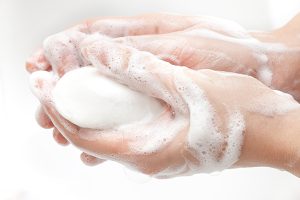Hand Sanitizer vs. Soap: Which Is More Effective?
Hand hygiene is a cornerstone of disease prevention. With the rise of infectious diseases, understanding the effectiveness of hand sanitizers versus traditional soap and water is crucial. This article delves into the science behind both methods to help you make informed choices about your hand hygiene practices.
Understanding the Mechanisms
How Soap and Water Work
Soap molecules have hydrophilic (water-attracting) and hydrophobic (water-repelling) ends. When you lather with water, the hydrophobic tails bind to oils and grease on your hands, while the hydrophilic heads bind to water. This dual action allows soap to emulsify oils and suspend dirt, which is then rinsed away, effectively removing a broad spectrum of pathogens, including bacteria, viruses, and chemicals.
How Hand Sanitizer Works
Alcohol-based hand sanitizers, typically containing at least 60% alcohol, work by denaturing proteins in microorganisms, effectively killing many types of germs. However, they are less effective on dirty or greasy hands, as the alcohol cannot penetrate oils to reach the pathogens.
Effectiveness Comparison
Soap and Water
Washing hands with soap and water is highly effective in removing a wide range of pathogens, including bacteria, viruses, and chemicals. The mechanical action of scrubbing, combined with the emulsifying properties of soap, ensures thorough cleaning. This method is particularly effective when hands are visibly dirty or contaminated.
Hand Sanitizer
Hand sanitizers are convenient and effective when soap and water are unavailable. They are particularly useful in killing germs on hands that are not visibly soiled. However, they may not remove all types of germs, such as norovirus and Clostridium difficile, and are less effective when hands are greasy or visibly dirty.
Best Practices for Hand Hygiene
When to Use Soap and Water
Use soap and water when:
Hands are visibly dirty or greasy.
After using the restroom.
Before eating or preparing food.
After coughing or sneezing into your hands.
When to Use Hand Sanitizer
Use hand sanitizer when:
Soap and water are not available.
Hands are not visibly dirty.
You need a quick and convenient option.
Ensure the sanitizer contains at least 60% alcohol and rub hands together until dry.
FAQs
Q1: Is hand sanitizer as effective as soap and water?
A1: Hand sanitizer is effective when soap and water are unavailable, especially for killing germs on clean hands. However, soap and water are more effective in removing a broader range of pathogens, particularly when hands are visibly dirty.
Q2: Can hand sanitizer replace handwashing?
A2: Hand sanitizer can be a substitute when soap and water are not available, but it should not replace handwashing when hands are visibly soiled or greasy.
Q3: How long should I wash my hands?
A3: Wash your hands for at least 20 seconds, ensuring all areas are scrubbed, including the back of hands, between fingers, and under nails.
Q4: Can hand sanitizer cause skin dryness?
A4: Yes, frequent use of hand sanitizer can lead to skin dryness. Applying a moisturizer after use can help prevent this.
Q5: Are there any germs that hand sanitizer cannot kill?
A5: Hand sanitizer may not be effective against certain germs, such as norovirus and Clostridium difficile. Soap and water are more effective in these cases.
Final Thoughts
Maintaining proper hand hygiene is essential in preventing the spread of infections. While hand sanitizers offer convenience, especially when on the go, soap and water remain the gold standard for thorough hand cleaning.

Hand Sanitizer vs. Soap: Which Is More Effective?
